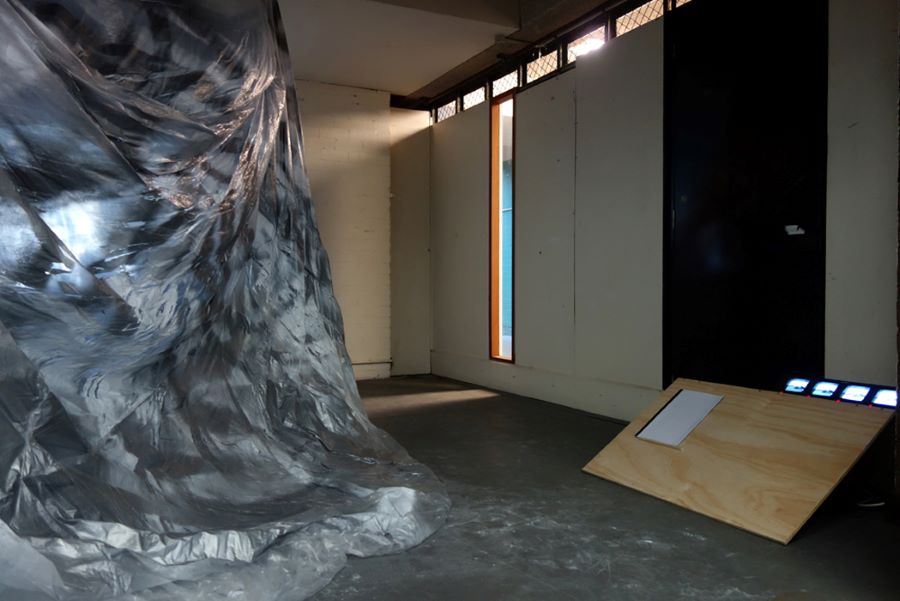Nguyen exposes the process of film-making in order to question the reality of documenting a performance and how the camera itself can influence the outcome.
Image: Hong An James NGUYEN
James Nguyen
At the centre of James Nguyen’s video and performance work is the process of making and observing art as he explores the “performative potential of the camera”. By documenting the actual recording of footage, the camera and the act of film-making become part of the work rather than the vehicle to depict it. While Nguyen initially started out experimenting with painting and drawing it wasn’t long before he became interested in engaging more physically with space and began creating installation works. Using a camera he started documenting these works and as a result his practice now focuses more on video and performance work.
The idea of observing the art-making process is explored in Nguyen’s series The Man With the Movie Camera (2014) which directly references Soviet director, Dziga Vertov’s 1929 silent film of the same name. Like Vertov, Nguyen exposes the process of film-making in order to question the reality of documenting a performance and how the camera itself can influence the outcome. Nguyen says, “the work attempts to move the camera beyond pure documentation and use the body and its movements as an extension of the camera.” It’s no longer about the artist performing in front of the camera but the camera and the person behind it controlling and telling the story.
Nguyen often involves his family and friends in the process of creating the works which results in them being autobiographical. Take the work Elastic 1 (2014), for example, it depicts Nguyen and his brother stretching elastic bands over their heads echoing Renato Bertelli’s Continuous Profile of Mussolini (1933). Like the sculpture, which offers a 360-degree profile of Mussolini, the film uses an inward turning camera, manually paced by Nguyen’s mother to pan 360 degrees. Nguyen explains the work, “By replicating the continuous lines of the ultimate symbol of the Fascist state, my brother and I tried to physically formalise the potentially repressive discipline of the cinematic demands of state propaganda.”
While his works, like Elastic 1, are often political, with themes of fatalism and defeatism, this is not necessarily intentional with Nguyen claiming that he is more drawn to optimistic and positive work and is still trying to find a balance between the two. His work addresses the mistreatment of refugees and migrants and is influenced by the experiences of his family who migrated to Australia from Vietnam. Nguyen says, “It is the unspoken and subtle human complexities that underpin this issue that I find incredibly interesting but also infuriating.”
Nguyen has just completed Gallery 4A’s Beijing Studio Program at Shen Shaomin’s studio with fellow Sydney artist Claudia Nicholson. During the residency Nguyen participated in a discussion panel at the 2nd FASIC Australian Studies in China Conference: The Big Picture: Lives, Landscapes, Homelands in Australian and Chinese Art at Renmin University, talking about the future of artists’ residencies.
Text by Jane Llewellyn, an arts writer based in Adelaide.
2015 Union Dots collaborative studio program, New York
2014 Anne & Gordon Samstag International Visual Arts Scholarship
2014 Masters of Fine Arts (Candidate), Sydney College of Arts
2012 Bachelor of Fine Art (First Class Honours), National Art School, Sydney
Artist's website: www.jamesnguyen.com.au

